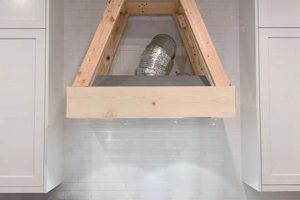Formulations created in a non-commercial setting for washing and deodorizing the passenger compartment of a vehicle constitute homemade solutions for automotive housekeeping. These preparations frequently utilize common household ingredients such as vinegar, baking soda, and dish soap, mixed to create effective and economical cleaning agents. As an example, a solution of diluted vinegar can be used to remove grime and stains from various surfaces within the car.
The appeal of these solutions lies in their accessibility, cost-effectiveness, and reduced reliance on potentially harsh commercial products. Historically, individuals have sought alternatives to specialized automotive detailing services and proprietary cleaning chemicals to save money and control the ingredients to which their vehicles and themselves are exposed. This practice promotes environmental consciousness by utilizing existing resources and reducing plastic waste associated with pre-packaged cleaners.
The following sections will detail specific recipes, application techniques, and safety considerations for preparing and implementing these interior cleaning solutions, offering a comprehensive guide to maintaining a clean and fresh vehicle interior with minimal cost and environmental impact.
Tips for Effective Automotive Interior Housekeeping Formulations
The following recommendations provide guidance for the creation and application of effective, homemade vehicle interior cleaning solutions. Adherence to these guidelines can contribute to optimal results and prevent potential damage to vehicle surfaces.
Tip 1: Ingredient Dilution is Crucial: Concentrated solutions of vinegar or dish soap can damage certain interior materials. Always dilute cleaning agents with water according to recommended ratios to prevent discoloration or surface degradation.
Tip 2: Spot Test Prior to Application: Before applying any cleaning mixture to a large surface area, conduct a spot test in an inconspicuous location. This allows observation of potential adverse reactions, such as fading or staining, before widespread application.
Tip 3: Microfiber Cloths are Recommended: Utilize microfiber cloths for wiping and scrubbing. Their soft texture and absorbent properties minimize the risk of scratching or damaging delicate interior surfaces.
Tip 4: Baking Soda for Odor Removal: Baking soda acts as a natural deodorizer. Sprinkle it liberally on carpets and upholstery, allow it to sit for several hours, and then vacuum thoroughly to eliminate unpleasant odors.
Tip 5: Targeted Cleaning for Different Surfaces: Formulate specific cleaning solutions for different interior surfaces. Leather seats require gentle cleaners designed for leather, while plastic surfaces can tolerate slightly more aggressive solutions.
Tip 6: Proper Ventilation is Essential: Ensure adequate ventilation during the cleaning process. Open windows or operate the vehicle’s ventilation system to prevent the buildup of fumes and expedite drying.
Tip 7: Thorough Drying Prevents Mold Growth: After cleaning, ensure all surfaces are completely dry to prevent the growth of mold and mildew. Use a dry cloth or a handheld vacuum with a crevice tool to remove excess moisture.
Consistent application of these techniques results in a cleaner, fresher, and more hygienic vehicle interior. Furthermore, adherence to these recommendations promotes the longevity of interior materials.
The subsequent section will address the common mistakes to avoid when utilizing non-commercial solutions for automotive interior maintenance, thereby mitigating potential risks and ensuring optimal results.
1. Ingredient Safety
The formulation of non-commercial vehicle interior cleaning solutions necessitates rigorous attention to the safety profile of each constituent. The direct contact of these solutions with occupants and the potential for material degradation within the vehicle interior mandate a careful evaluation of both immediate and long-term effects. Improper selection of ingredients can lead to a range of adverse consequences, from skin irritation and respiratory distress to irreversible damage to upholstery, dashboards, and other interior components.
A primary concern involves the use of excessively acidic or alkaline substances. Undiluted vinegar, for example, while effective in removing certain stains, can cause discoloration and premature wear on leather and vinyl surfaces. Similarly, the incorporation of harsh abrasive agents may lead to scratching and permanent marring of delicate plastic trim. Inhalation of volatile organic compounds (VOCs) released from certain cleaning agents can also pose a significant health risk, particularly in the confined space of a vehicle cabin. A real-world example illustrating this danger is the misapplication of ammonia-based cleaners, which can react with other cleaning agents to produce toxic fumes.
Therefore, it is essential to prioritize ingredients with established safety records and to employ appropriate dilution techniques to minimize potential hazards. Thorough research and adherence to recommended guidelines are crucial for ensuring the health and safety of both the vehicle occupants and the vehicle’s interior. The responsible formulation and application of these solutions mitigates risks, fostering a clean and hygienic environment within the vehicle without compromising safety.
2. Surface Compatibility
The selection and application of homemade automotive interior cleaning solutions are critically contingent upon understanding material properties and potential interactions with various cleaning agents. Surface compatibility dictates the long-term effectiveness and safety of these cleaning regimens, preventing damage, discoloration, or degradation of vehicle interior components.
- Textile Considerations
Upholstery fabrics, including cloth and synthetic blends, exhibit varying degrees of sensitivity to different cleaning solutions. Harsh detergents may cause fading, shrinking, or weakening of fibers. Natural fibers, such as cotton, are particularly susceptible to water stains if not dried promptly and thoroughly. A diluted solution of mild dish soap or a dedicated upholstery cleaner is generally recommended. Steam cleaning, while effective, should be approached with caution to avoid over-saturation.
- Plastic and Vinyl Vulnerabilities
Interior plastic and vinyl surfaces, commonly found on dashboards, door panels, and trim, can be susceptible to cracking, discoloration, or a sticky residue when exposed to inappropriate cleaning agents. Solvents, alcohol-based cleaners, and abrasive compounds should be avoided. A pH-neutral cleaner, diluted with water, is preferable. Application with a microfiber cloth is essential to prevent scratching.
Leather Care ProtocolsLeather upholstery demands specialized care due to its porous nature and susceptibility to drying and cracking. Common household cleaners are generally unsuitable. A dedicated leather cleaner, formulated to moisturize and protect the material, is necessary. Following the cleaning process, a leather conditioner should be applied to maintain its suppleness and prevent premature aging.
- Glass and Mirror Specifics
Automotive glass and mirrors require streak-free cleaning without damaging surrounding materials. Ammonia-based cleaners, while effective, can damage vinyl and leather if overspray occurs. A dedicated automotive glass cleaner or a diluted vinegar solution is recommended. Microfiber cloths are crucial for achieving a clear, streak-free finish.
The judicious selection of cleaning agents, informed by a comprehensive understanding of material properties, ensures the longevity and aesthetic appeal of the vehicle interior. A failure to consider surface compatibility can result in irreversible damage, necessitating costly repairs or replacements. Therefore, rigorous testing and adherence to established cleaning protocols are paramount when employing homemade solutions for automotive interior maintenance.
3. Dilution Ratios
The concept of dilution ratios is foundational to the safe and effective application of homemade automotive interior cleaning solutions. Precise control over the concentration of cleaning agents minimizes the risk of material damage while optimizing cleaning efficacy.
- Preventing Surface Damage
Excessively concentrated cleaning agents can degrade or discolor sensitive interior surfaces. For instance, undiluted vinegar, while effective as a cleaner, can damage leather and vinyl. Appropriate dilution ensures that the cleaning solution is strong enough to remove dirt and grime but gentle enough to avoid causing harm. Pre-testing the diluted solution on an inconspicuous area is always recommended.
- Optimizing Cleaning Performance
An excessively diluted cleaning agent may lack the necessary strength to effectively remove stubborn stains or embedded dirt. Determining the appropriate dilution ratio ensures that the cleaning solution is potent enough to deliver the desired results. This requires consideration of the specific cleaning task and the type of soil being addressed. For example, removing grease may require a slightly higher concentration of cleaning agent than removing dust.
- Minimizing Residue Buildup
Improper dilution can lead to excessive residue buildup on cleaned surfaces. Concentrated cleaning agents may leave behind a sticky or unsightly film, attracting more dirt over time. Proper dilution helps to ensure that the cleaning solution is rinsed away completely, leaving surfaces clean and residue-free. This is particularly important for porous materials such as upholstery.
- Economic Considerations
Utilizing appropriate dilution ratios maximizes the yield from cleaning supplies, reducing waste and lowering overall cleaning costs. Using more concentrated solutions than necessary represents an inefficient use of resources. Correct dilution is therefore both environmentally responsible and economically prudent.
In summary, understanding and applying appropriate dilution ratios is critical to the successful and safe utilization of homemade vehicle interior cleaning solutions. Precise control over concentration ensures optimal cleaning performance, prevents damage to interior surfaces, minimizes residue buildup, and promotes economic efficiency. The specific dilution ratio should be determined based on the type of cleaning agent, the nature of the cleaning task, and the type of material being cleaned.
4. Odor Elimination
The capacity to eliminate undesirable scents represents a critical function of any effective formulation for automotive interior sanitation. Vehicle interiors, by their nature, are prone to accumulating various odor-causing agents. Spilled food and beverages, pet dander, smoke residue, and mold growth contribute to unpleasant and persistent smells. Therefore, the capability of a solution to neutralize or mask these odors is a primary determinant of its utility.
Effective odor elimination requires a two-pronged approach: addressing the source of the odor and neutralizing the odor molecules themselves. Many solutions employ absorbent materials, such as baking soda, to physically bind odor-causing particles. Others utilize chemical reactions, such as oxidation, to break down odor molecules into less volatile and less offensive compounds. A failure to adequately address both the source and the symptoms of the odor will result in only temporary relief. For example, simply masking the smell of spilled milk without removing the residue will lead to the reappearance of the odor as the milk continues to decompose.
Successful incorporation of odor-eliminating properties is essential for creating a truly clean and fresh vehicle interior. While solutions can effectively remove dirt and grime, the presence of lingering odors can undermine the overall impression of cleanliness. Therefore, odor elimination should be regarded as an integral component of any comprehensive interior maintenance strategy. Solutions incorporating baking soda, activated charcoal, or enzymatic deodorizers can effectively mitigate a wide range of common vehicle odors, enhancing the overall driving experience.
5. Residue removal
The comprehensive elimination of remnants from cleaning agents constitutes a critical aspect of automotive interior maintenance utilizing self-prepared solutions. The presence of residual substances, whether from soaps, detergents, or other components, can attract dirt, promote bacterial growth, and degrade material integrity over time. Formulations failing to account for thorough removal can, paradoxically, exacerbate cleaning needs and compromise the longevity of interior surfaces. For instance, inadequate rinsing after applying a homemade upholstery cleaner may leave a sticky film, readily attracting dust and grime, thereby necessitating more frequent and intensive cleaning cycles.
Several factors contribute to the potential for residue buildup when employing “diy car interior cleaner”. Inconsistent dilution ratios, as mentioned earlier, are a primary cause. Over-application of the cleaning solution can also overwhelm the capacity for complete removal, particularly in porous materials like fabric and leather. The use of inappropriate wiping cloths, such as those that are not highly absorbent or that leave behind lint, further compounds the problem. Practical application demands the use of microfiber cloths for wiping and the incorporation of a clean water rinse after cleaning solution application. Vacuuming after drying further aids in the extraction of residual particles.
In conclusion, effective implementation of homemade automotive interior cleaning regimens necessitates a deliberate focus on comprehensive residue removal. Inattention to this detail can negate the benefits of the cleaning process, leading to accelerated soiling, material degradatio
n, and an overall reduction in the quality of the vehicle interior. Prioritizing proper rinsing techniques and employing appropriate materials for wiping and drying are essential steps in ensuring a truly clean and well-maintained automotive environment.
6. Cost Effectiveness
The economic advantage derived from formulating automotive interior cleaning solutions within a non-commercial setting constitutes a primary motivator for many vehicle owners. This approach contrasts significantly with the recurrent expenditure associated with professional detailing services and commercially available cleaning products, thereby presenting a potentially substantial cost-saving alternative.
- Reduced Material Costs
Utilizing common household ingredients, such as vinegar, baking soda, and dish soap, minimizes the financial outlay required for cleaning agents. These materials are typically less expensive than specialized automotive cleaning products and are often readily available in the household, precluding the need for additional purchases. For instance, a gallon of white vinegar, costing a few dollars, can be diluted to create a multi-purpose cleaner suitable for various interior surfaces.
- Elimination of Labor Expenses
The self-application of cleaning solutions eliminates the labor costs associated with professional detailing services. These services often entail significant charges, reflecting the time, expertise, and overhead expenses of the provider. Performing the cleaning tasks oneself obviates these fees, translating into direct financial savings. The cost of a full interior detailing service can easily exceed one hundred dollars, a sum that can be saved by employing solutions instead.
- Extended Product Lifespan
Formulating cleaning solutions as needed reduces the potential for product spoilage or waste. Commercially available cleaning products often have limited shelf lives, and excess quantities may expire before being fully utilized. Preparing only the necessary amount of solution minimizes this waste, further contributing to cost savings. This approach is particularly relevant for individuals who clean their vehicle interiors infrequently.
- Controlled Resource Allocation
The ability to tailor cleaning solutions to specific needs and surfaces allows for more efficient resource allocation. Rather than purchasing a variety of specialized cleaning products, a single, versatile base solution can be adapted to address different cleaning tasks. This targeted approach minimizes unnecessary expenditure and maximizes the utility of available resources. For example, a diluted solution of dish soap can be used for both upholstery and plastic surfaces, reducing the need for multiple specialized products.
The confluence of reduced material costs, elimination of labor expenses, extended product lifespan, and controlled resource allocation collectively underscores the cost-effectiveness inherent in formulating solutions for automotive interior cleaning. This approach provides a viable alternative to commercial services and products, offering significant financial benefits without compromising the quality or effectiveness of the cleaning process.
7. Application technique
The efficacy of automotive interior cleaning solutions formulated in a non-commercial setting is intrinsically linked to the application technique employed. The selection of appropriate methods and tools directly influences the outcome of the cleaning process, affecting both the thoroughness of grime removal and the preservation of interior surface integrity.
- Cloth Selection and Usage
The choice of cleaning cloth significantly impacts the removal of dirt and the prevention of damage. Microfiber cloths are preferable due to their non-abrasive nature and superior absorbent properties, which facilitate effective dirt removal without scratching delicate surfaces. Conversely, abrasive cloths or paper towels can cause scratching and should be avoided. Proper technique dictates dampening the cloth with the cleaning solution rather than directly spraying the surface, preventing oversaturation and potential damage.
- Spray Nozzle Adjustment and Direction
For solutions applied via spray bottles, adjusting the nozzle to produce a fine mist is essential for even distribution and prevention of oversaturation. Directing the spray towards the cleaning cloth, rather than directly onto the surface, allows for controlled application and minimizes the risk of solution pooling or dripping. This is particularly important for electronic components and delicate upholstery materials.
- Agitation and Scrubbing Methods
Effective cleaning often requires agitation to loosen embedded dirt and grime. Gentle scrubbing with a soft-bristled brush or sponge can dislodge stubborn particles without damaging the underlying surface. The appropriate level of pressure and the direction of scrubbing should be tailored to the specific material being cleaned, avoiding excessive force that could cause scratching or wear. Circular motions are generally effective for upholstery, while linear motions are suitable for plastic and vinyl surfaces.
- Drying and Ventilation Procedures
Thorough drying is crucial to prevent the growth of mold and mildew, as well as to eliminate water spots and streaks. Using a clean, dry microfiber cloth to wipe down surfaces immediately after cleaning helps to absorb residual moisture. Proper ventilation, achieved by opening windows or operating the vehicle’s ventilation system, promotes air circulation and accelerates the drying process. This is particularly important for upholstered surfaces, which can retain moisture for extended periods.
These application techniques, when implemented consistently, optimize the performance of non-commercially formulated automotive interior cleaning solutions. Adherence to these guidelines promotes both effective grime removal and the preservation of interior surfaces, contributing to a clean and well-maintained vehicle environment. A nuanced understanding of material properties and appropriate cleaning methods is essential for achieving optimal results.
Frequently Asked Questions
This section addresses common inquiries regarding the creation and application of non-commercial cleaning solutions for vehicle interiors. These questions aim to clarify best practices and mitigate potential risks associated with this approach.
Question 1: Are household cleaning products universally suitable for automotive interiors?
No. Certain household cleaners contain harsh chemicals that can damage or discolor automotive interior surfaces. Solvents, abrasives, and ammonia-based products should be avoided due to their potential to degrade sensitive materials like leather, vinyl, and plastic. Specific formulations tailored to automotive surfaces are recommended.
Question 2: What is the recommended dilution ratio for vinegar when cleaning vehicle interiors?
A 1:1 dilution ratio of white vinegar to water is generally considered safe for most interior surfaces. However, a spot test on an inconspicuous area is advisable before widespread application. For more delicate materials like leather, a weaker solution or a
specialized leather cleaner is preferable.
Question 3: How can unpleasant odors be effectively removed from vehicle upholstery?
Baking soda is a commonly used and effective odor absorbent. Sprinkling baking soda liberally on the affected area, allowing it to sit for several hours or overnight, and then vacuuming thoroughly can neutralize many odors. For persistent odors, professional detailing or specialized enzymatic cleaners may be necessary.
Question 4: Is it safe to use steam cleaners on vehicle upholstery?
Steam cleaning can be effective for sanitizing and removing stains from upholstery. However, excessive heat or moisture can damage certain materials. It is crucial to use a low-heat setting and avoid prolonged exposure to any single area. Allow ample time for the upholstery to dry completely to prevent mold growth.
Question 5: How can streaking on interior glass surfaces be minimized?
Using a clean microfiber cloth and a dedicated automotive glass cleaner, or a diluted vinegar solution, is essential for streak-free results. Avoid using paper towels, which can leave lint behind. Applying the cleaner sparingly and wiping in a consistent direction further minimizes streaking.
Question 6: What precautions should be taken when cleaning electronic components within the vehicle interior?
Avoid direct spraying of any liquid onto electronic components, such as dashboard displays or control panels. Dampen a microfiber cloth with a mild cleaning solution and carefully wipe the surfaces, ensuring no moisture enters sensitive areas. Disconnecting the vehicle’s battery before cleaning electronic components is a prudent safety measure.
Proper selection of cleaning agents, appropriate dilution ratios, and careful application techniques are paramount for achieving optimal results and preventing damage to vehicle interiors. Consulting a professional detailer may be advisable for complex or persistent cleaning challenges.
The subsequent section will provide a comprehensive guide to common mistakes that should be avoided when formulating and applying non-commercial cleaning solutions for automotive interiors, thereby promoting safer and more effective cleaning practices.
Concluding Remarks on Automotive Interior Cleaning Solutions
This exposition has addressed the multifaceted considerations surrounding the formulation and application of homemade solutions for automotive interior maintenance. Key aspects, including ingredient safety, surface compatibility, dilution ratios, odor elimination, residue removal, cost-effectiveness, and application techniques, have been examined to provide a comprehensive understanding of this alternative to commercial products and services. Successful implementation hinges on meticulous attention to detail and a thorough understanding of material properties.
Effective utilization of do-it-yourself car interior cleaner offers a viable pathway to maintaining a clean and hygienic vehicle environment while potentially reducing both financial expenditure and environmental impact. Continued adherence to best practices and diligent research into cleaning agent properties will ensure the long-term preservation of vehicle interiors and the well-being of vehicle occupants. A commitment to informed decision-making remains paramount in this endeavor.







